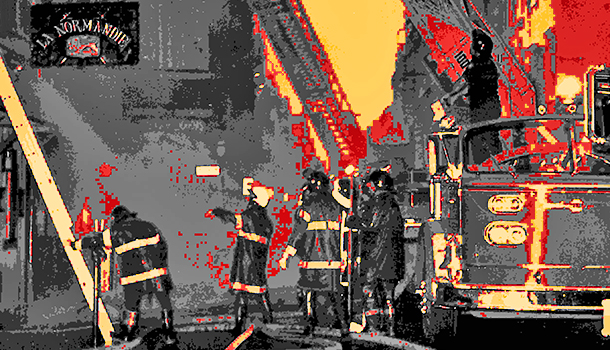
BOOK REVIEW: ‘Tinderbox’
The untold story of the Up Stairs Lounge fire and the rise of gay liberation.
You’ll never forget that one night. The drinks were cold, the weather was warm, and you were out to have fun with friends you loved and those you hadn’t yet met. You’ll never forget the music, the lights, or the name of the bar—and if you did, as in the new book Tinderbox by Robert W. Fieseler, there was probably a reason.

Sunday afternoon, June 24, 1973, started like every other Sunday at the Up Stairs Lounge in New Orleans’ French Quarter.
Bar manager Buddy Rasmussen opened the place for its weekly beer bash, where patrons could enjoy drink specials all afternoon. Buddy had come with his “lover,” Adam, and as the regulars filtered in, the music started, the drinks flowed, and the Up Stairs Lounge filled with gay men, a few allies, and good times.
That the Up Stairs Lounge even existed is remarkable: just a few years after Stonewall, gay men were still openly persecuted, legally and otherwise. It was unlawful in many places, for instance, for a man to dance with another man. In some states, gay sex had been punishable by life in prison.
But there was the Up Stairs Lounge, quietly advertising with a canopy out front to welcome the public—everyone, that is, except hustlers.
Early that evening, witnesses remembered a fight over forbidden hustling, and two men were kicked out. Though no one will ever know for sure, it’s believed that one of them walked down the street, purchased a container of lighter fluid, returned to the bar, and dumped the can’s contents onto the wooden steps of the hundred-year-old building.
Then he dropped a flame on the steps and walked away. Within seconds, says Fieseler, “No one was going into the Up Stairs Lounge—nor was anyone coming out.”
And if that doesn’t chill you, there’s a lot more about Tinderbox that will, starting with what immediately follows those words: page after page of stomach-twisting details of death by fire and the horror of publicly burning alive. Author Robert W. Fieseler shares the details, and they are indeed wretched.
That’s only part of the shock of this book. It continues with the controversy within religious organizations, gay-friendly and otherwise, and details the birthing pains of activism that seem as painful to read as they must’ve been in life. As he’s telling the story, Fieseler continues to remind readers that officials seemed not to care about solving this crime, despite that there were survivors to mourn the 32 who died in the fire.
And then there were the families who rejected their sons, even in death.
Through all this, Fieseler asks—and answers—why we know so little about this tale. His answers are multitudinous, compassionate, important in a historical context, and emotional. He concludes that “With the last bodies laid to rest, the story faded from minds.”
But Tinderbox makes this tragedy one that you won’t likely forget.
This article appears in the October 2018 edition of OutSmart magazine.










